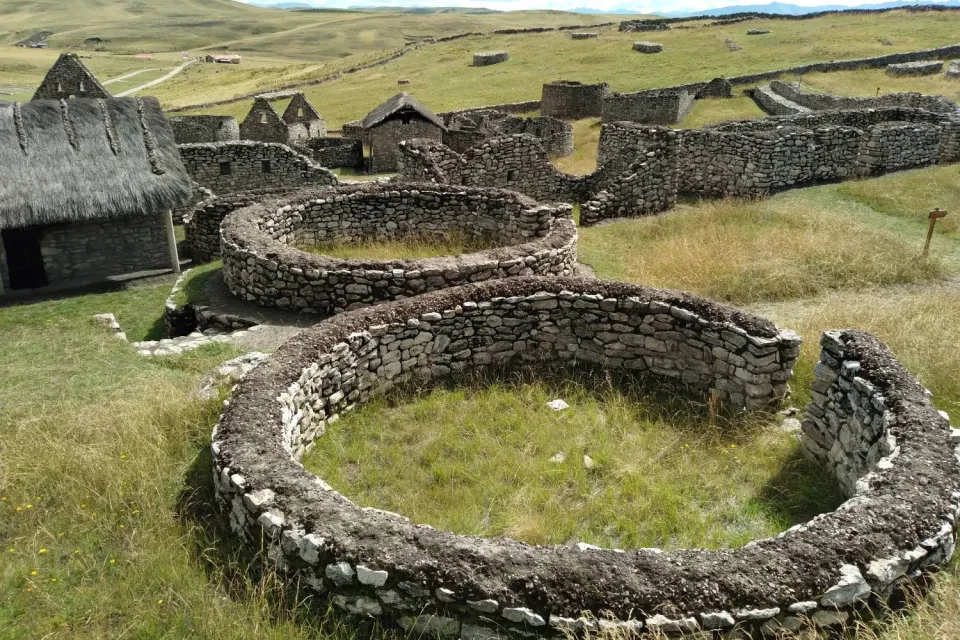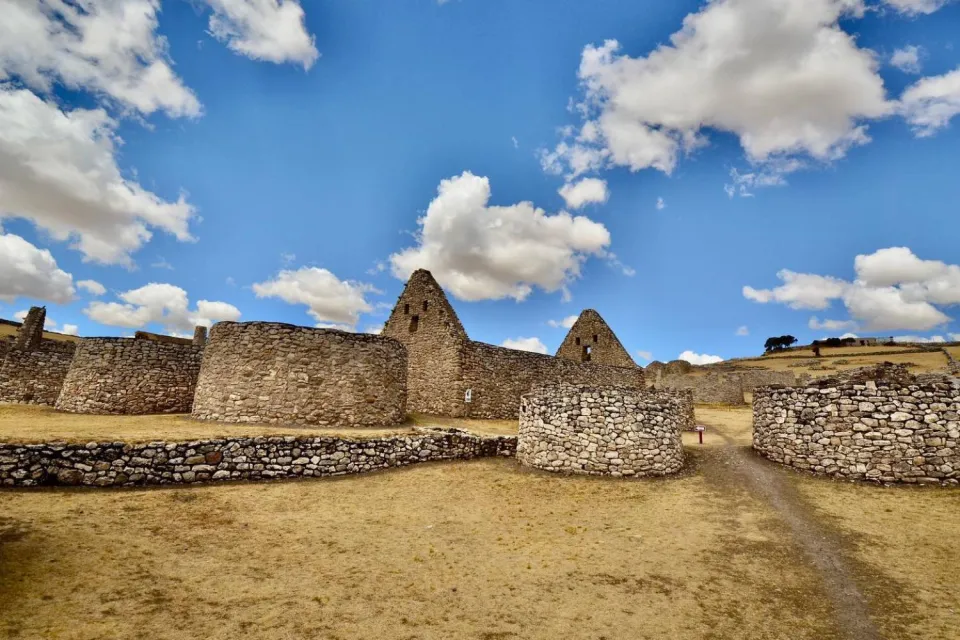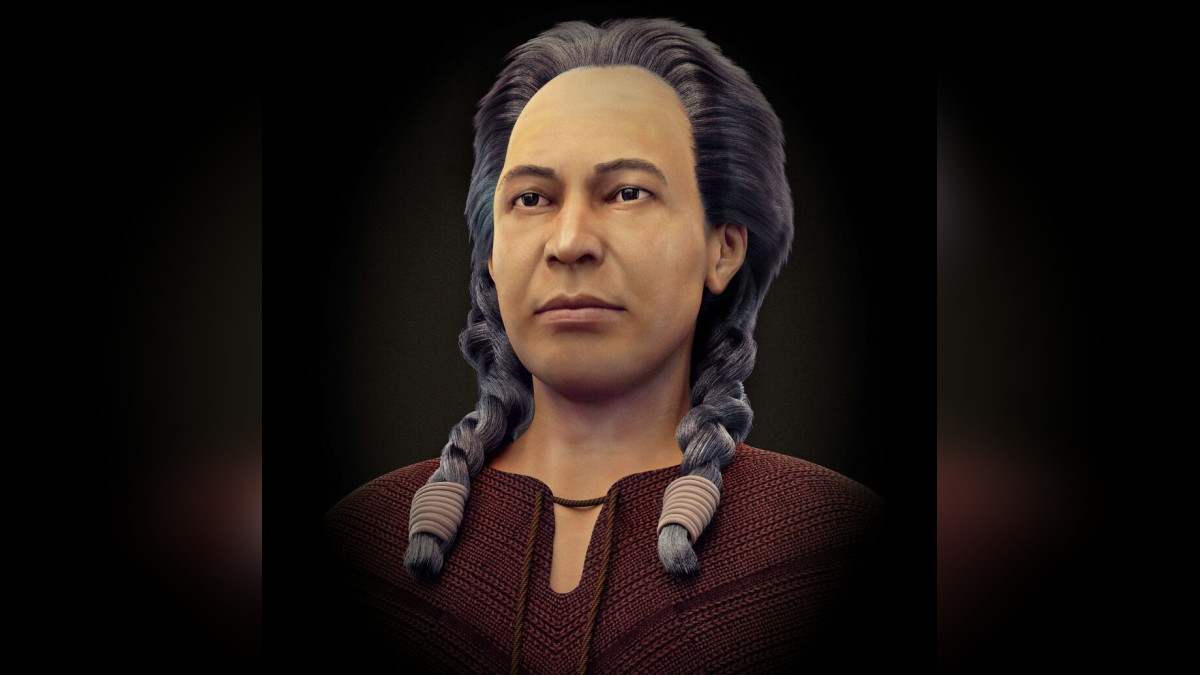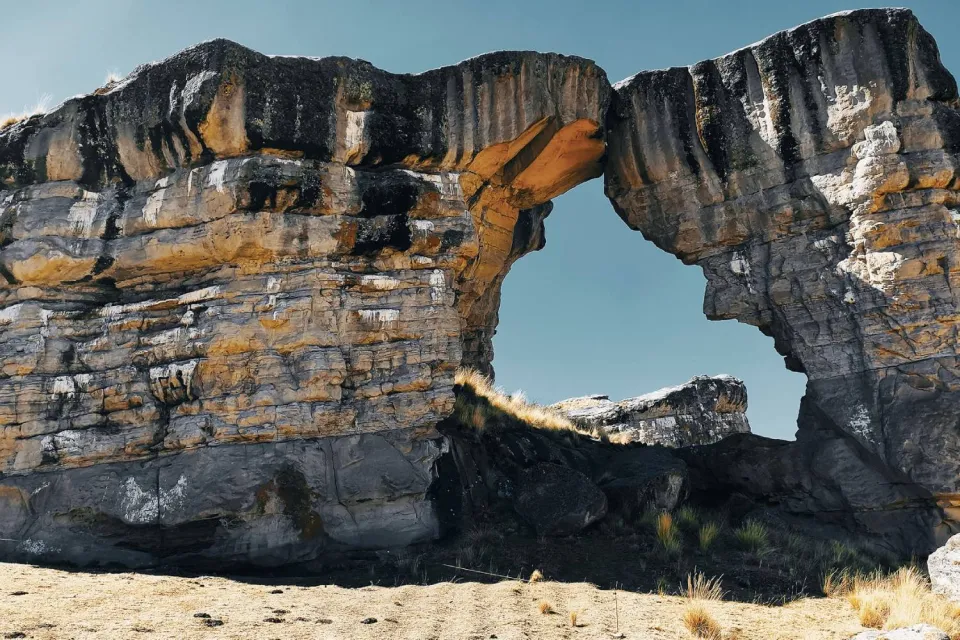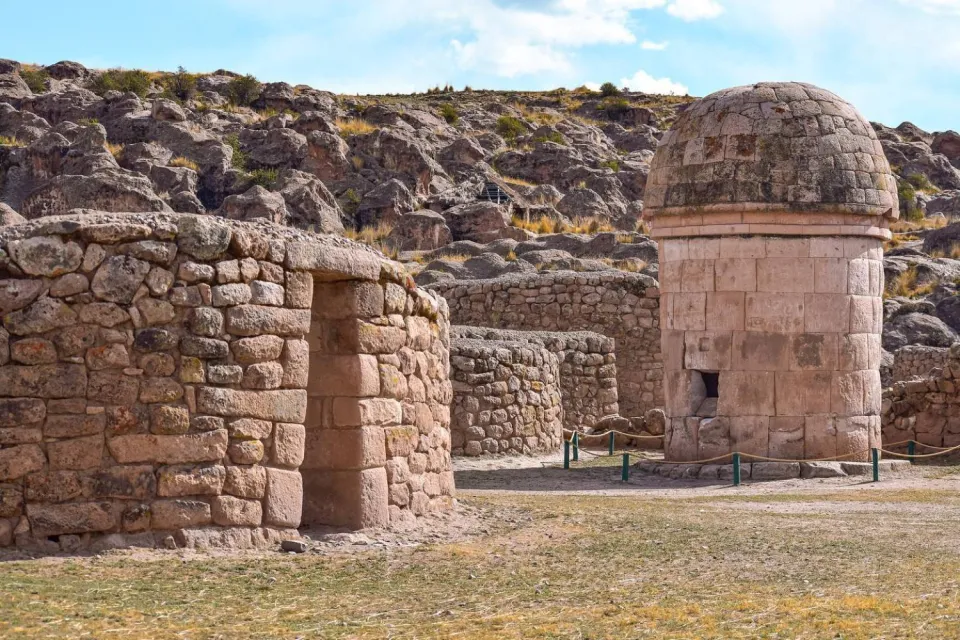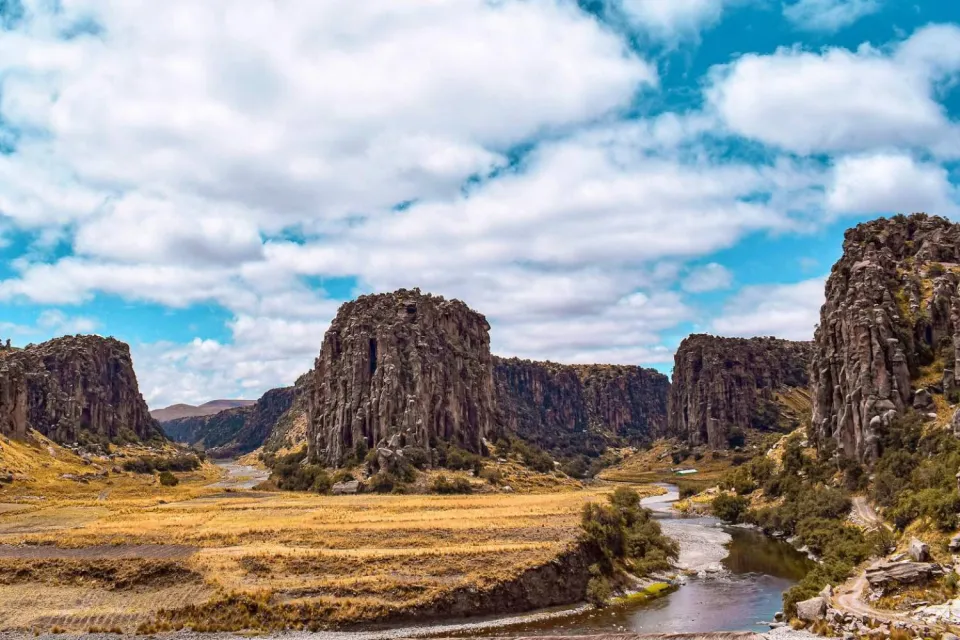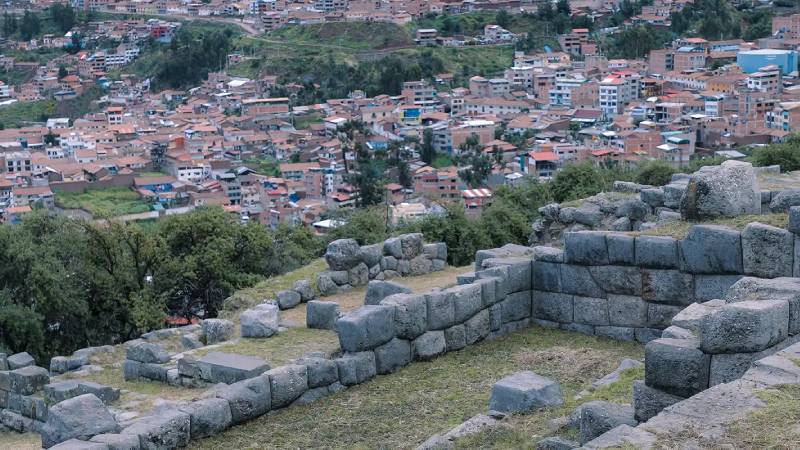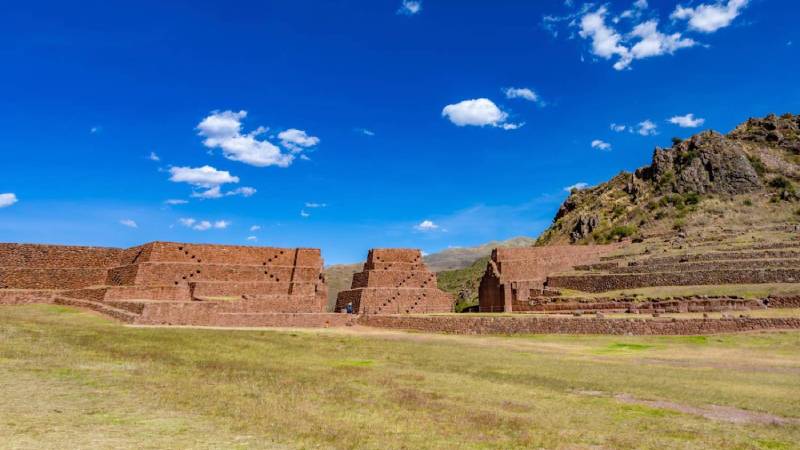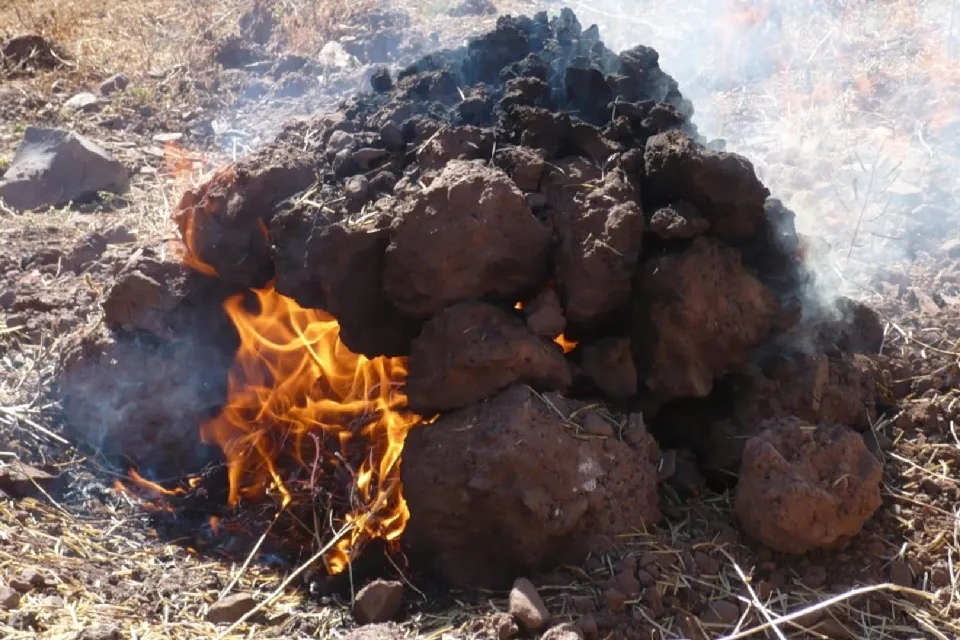Kanamarca, the ancient capital of the great K'ana nation, is a living testimony of a civilization that defied time.
Among sacred temples, pre-Hispanic roads and millenary tombs, the archaeological site of Kanamarca holds the secrets of a people that left its mark on history, yet despite its greatness, it remains a mystery to many.
However, despite its greatness, it remains a mystery to many. Why does almost no one talk about it?
What is Kanamarca?
Kanamarca is an ancient archaeological site located in the province of Espinar, Cusco, at more than 4,000 meters above sea level. This archaeological center is surrounded by the sacred Inkapirwa, P'usuqueña and other sacred hills.
It was an important administrative, residential and religious center, considered the capital of the great K'ana nation.
The K'ana culture was a pre-Inca people that integrated peacefully to the Inca Empire, becoming a key ally in their conquests.
Why is it an archaeological treasure?
Kanamarca is a living testimony of Andean history, with impressive pre-Hispanic architecture that includes:
- Circular, rectangular and quadrangular enclosures, built with stone and mud.
- Pre-Inca water channels, which demonstrate their advanced knowledge in hydraulics.
- Tombs and funerary contexts, where the K'anas buried their dead inside their dwellings, maintaining a connection with their ancestors.
- Roads, ceremonial spaces and agricultural terraces, evidence of their administrative, religious and economic importance in the region.
In addition, the finding of the Lady of Kanamarca, a priestess of the K'ana elite, confirms its religious and cultural relevance.
History of Kanamarca
Espinar’s First Inhabitants
The region of Espinar was inhabited more than 5,000 years ago by the Yauri man who settled in Chisipata, Trapichepampa and Yuthu, establishing their territory as far as Acomayo, Canchis, Puno and Arequipa.
With time, the K'ana regional state arrived and took the bases of the Yauri man to settle in this place.
The K'ana state
The Yauri man established the base of the K'ana regional state with the human settlements of Pichiwas, Koporaquis, Languis, Qewes Pampamarkas, Ayawiras, Choquepiqllo and Cavanas.
Over time, the K'ana regional state was consolidated, whose capital was Hatun K'ana, today known as the district of Pichigua.
They were dedicated to agriculture and the domestication of animals.
Inca Period
The K'anas peacefully joined the Inca Empire, and it was the Inca Pachacutec himself who, in his quest for perfection and monumentality, rebuilt and organized the city.
As part of this process, he established a strategic urban layout and built palaces such as Kirwarkancha for the panacas and royal families.
Within the K'ana Nation, a circular enclosure called Sunturwasi was also built, a place where weapons and shields belonging to the Inca Viracocha were stored.
The K'anas became key allies in the wars against the Chancas. Thanks to this alliance, they obtained lands in the Collasuyo and consolidated themselves as an influential people within the Inca Empire.
Colonial Espinar
On March 23, 1534, the Spaniards ordered the construction of a city over the Inca dwellings and named it Nuestra Señora de la Concepción.
In October of the same year, Marquis Francisco Pizarro ordered the distribution of plots of land.
Years later, Captain Sebastian Garcilaso de la Vega authorized the construction of large houses inside the Inca square and its surroundings, where the Inca palaces were located.
During the Spanish colonization, the K'anas were forced to pay tribute and perform forced labor in mines without remuneration, being denied their basic rights.
In addition, they faced territorial reorganization with the creation of corregimientos and encomiendas.
The curacazgo of Pichigua became part of the corregimiento of Canas de Orcosuyo.
Present day
Espinar continues to be a region with a strong cultural identity. It is known as the “haughty K'ana land” and is an epicenter of Andean traditions, dances and music.
Its inhabitants are proud of their warrior history and are dedicated to the care and protection of the archaeological site of Kanamarca, which remains as a testimony of their ancestral past.
What to see?: The sectors that compose Kanamarca
The temple of Kanamarca
Located in the Túpac Yupanqui sector, at the top of the hill, the main temple of Kanamarca is the most imposing building of this archaeological site.
Its size and well-preserved structure make it a point of great historical value.
It stands out for having two entrances and small trapezoidal windows, elements that give it a unique style.
Its architecture is a clear reflection of cultural miscegenation, since it was built on the foundations of ancient K'ana structures, fusing the Andean legacy with the Spanish influence.
The Kallancas
The kallankas of Kanamarca are the largest constructions of the archaeological site.
They are rectangular buildings measuring between 15 and 20 meters long and 8 to 10 meters wide, with gables that reach up to 9 meters high.
These imposing spaces had multiple functions, serving as places for community meetings, political activities, religious ceremonies and social events, reflecting the importance of organization in Andean society.
The enclosures or dwellings
Kanamarca has a large number of housing enclosures, circular and rectangular in shape, where the ancient K'anas developed their daily life.
These structures not only functioned as domestic dwellings, but also as production workshops, evidencing a society organized around work and community.
Tombs or funerary contexts
Numerous funerary contexts have been found inside the enclosures, revealing key details about the funerary practices of the time.
One of the most important discoveries is that of the “Lady of Kanamarca”, whose remains were found in a circular enclosure.
These findings allow us to learn more about the beliefs and rituals of the ancient K'ana culture.
Discoveries and important facts of kanamarca
The Lady of Kanamarca
In 2004, Marco del Pezo discovered the tomb of the “Lady of Kanamarca”, a possible priestess of the K'ana elite buried with ceramics, precious metals and red spondylus beads. Her finding confirms the religious importance of the site.
Along with her remains, an infant was also found in a poor state of preservation and on top of him, an individual known as “guardian”.
The latter presented a cranial trepanation, suggesting the use of advanced medical techniques in the K'ana culture.
The K'ana-Inka Confederacy
The K'anas and Qanchis formed a strategic alliance with the Inkas, integrating peacefully into the empire.
They joined the military elite and formed part of the battalion of the “Sinchis”, the elite warriors of the Inca army.
The K'anas and Qanchis Corregions
After the Spanish conquest, the Tahuantinsuyo was reorganized into corregimientos within the Viceroyalty of Peru.
The K'ana territory became part of the K'anas-Qanchis Corregimiento, with Tinta as its capital.
It became the largest tributary population in colonial Peru, with a high number of Indians obliged to pay tribute.
The Almagristas, in their search for “El Dorado”, arrived in this region and settled due to the mineral wealth of the territory.
Túpac Amaru II Rebellion (1780-1783)
José Gabriel Condorcanqui, priest of the K'ana peoples of Surimana, Tungasuca and Pampamarca, adopted the name of Túpac Amaru II.
On November 4, 1780, he led the largest indigenous rebellion against Spanish rule, marking a milestone in the struggle for independence.
What does K'anamarca mean?
The name K'anamarca has different interpretations according to different scholars:
“braided people” or ‘people intertwined with strings’ from the Aymara Language.
It is based on the meaning of K'ana (“braided”) and Marka (“village”), suggesting a united or intertwined community.
Quechua “red village in height”.
According to researcher Luis A. Pardo, the name would come from the Quechua Ckanamarca, interpreted as “red village in height”. However, this theory does not coincide with the geology of the place.
“Resplendent place”
Another interpretation holds that Qana means “light” and Marka, “place”, which would result in “resplendent place”.
Why is it not as famous as Machu Picchu?
Kanamarca is not as famous as Machu Picchu for several reasons:
1. Less tourism promotion
Machu Picchu has been widely promoted worldwide by the Peruvian government and international organizations, while Kanamarca has yet to receive the same attention in tourism campaigns.
2. Limited infrastructure and accessibility
Machu Picchu has trains, buses and well-established routes for visitors. In contrast, Kanamarca does not have a well-developed tourism infrastructure, which makes access difficult and reduces the flow of visitors.
3. International recognition
Machu Picchu is a UNESCO World Heritage Site and one of the 7 Wonders of the Modern World, which gives it great visibility. Kanamarca, although important, has not received this level of recognition.
4. Impact of history and discovery
Machu Picchu was “rediscovered” by Hiram Bingham in 1911 and presented as a “lost city”, which attracted great interest. Kanamarca, although relevant, did not have a similar media “discovery”.
5. Focus on adventure tourism
The Inca Trail experience and the mountainous environment of Machu Picchu make it an iconic trekking destination, while Kanamarca is less known within this type of tourism.
6. Myths and mysticism
Machu Picchu has been shrouded in mystery about its use as a sacred city, astronomical observatory or royal refuge. Kanamarca, although important, has not been associated with mystical stories of the same magnitude.
Despite this, Kanamarca remains a valuable archaeological site and represents a fundamental part of K'ana and Andean history. With further dissemination and development, it could gain more recognition in the future.
Where is Kanamarca Espinar?
Kanamarca Espinar is located 15 km northeast of the city of Yauri, in the province of Espinar, Cusco, within the rural community of Chanin K'anamarca. Its altitude is 4050 m.a.s.l., which makes it a high altitude destination with breathtaking views.
How to get to Kanamarca Espinar?
To get to Kanamarca we have 3 options:
1. Private transportation
From Cusco, travel by road to Espinar (236 km, 4:30 hours approx.), then take a 5 km detour to Kanamarca.
2. Public transportation
If you are traveling from Cusco, go to the Huayruropata Terminal and buy a ticket to Espinar. Inform the driver that you want to get off at the detour to Kanamarca.
From there, you will have to walk 20 to 30 minutes by road to reach the archaeological site. In total, the trip takes approximately 5 hours.
3. Private transportation from Yauri
If you are in Espinar (Yauri), you can hire a cab or mototaxi to take you directly to Kanamarca, located 10 km away.
Recommendation:
Before boarding, agree on the price of the service, as some drivers may charge higher rates to tourists.
Climate in Kanamarca Espinar
The climate in this high Andean region is divided into two main seasons:
- Winter (May - October): Cold and dry, with temperatures between 0°C and 20°C, and night frosts.
- Summer (November - March): Humid and rainy, with rainfall exceeding 700 mm per year.
When is the best time to visit?
The best season is between May and October, when the weather is dry and the site is fully visible.
Between November and March, the landscape changes due to rain and snow.
Flora and Fauna
Due to the low temperatures, the flora in K'anamarca is typical of the Puna and is composed of species resistant to the weather conditions.
Among the most representative plants are:
- Q'ello T'ika
- Salvia
- Nettles
- Ajotillo
- Straw
- Dandelion
As for the fauna, the region is home to a variety of high Andean species, such as:
- Vizcachas
- Pumas
- Deer
- Birds such as the Jakachu, the Andean woodpecker, the pito and the pithitanca.
The biodiversity of K'anamarca is a reflection of the Andean ecosystem, where both flora and fauna have managed to adapt to the extreme conditions of the altitude.
Recommendations and tips to visit Kanamarca
What to bring?
- Bring your identity document (passport or ID) for the purchase of the entrance ticket.
- Dress in layers, as the weather varies considerably. During the day, the sun can be intense, while at night temperatures drop drastically. Wear jackets, scarves and gloves.
- Don't forget sunscreen and sunglasses to protect yourself from the intense Andean sun.
- Take a good camera to capture unique moments.
- It is important to bring water and snacks for the road, as there are no stores nearby as in other tourist attractions.
- If you visit during the rainy season, bring a waterproof poncho to protect you.
- Wear comfortable shoes suitable for hiking.
- Hire a guided tour before your visit, as there are no guides available at the entrance of the site.
- Carry cash for the entrance fee, preferably in soles. It is unlikely that they will accept dollars or cards, although entrance is free, you are expected to leave a tip for the caretaker in charge of the site.
Recommendations
- Prior acclimatization: Spend one or two days in Cusco before traveling to Espinar. The altitude in Espinar is higher and you could suffer from altitude sickness, which could affect your experience.
- Follow the marked trail: Avoid accidents and the risk of getting lost by staying on the established routes.
- Caution in rainy season: Turn off your cell phone immediately and follow the directions of the site manager. The area may be prone to electrical discharges, so there is a risk of lightning.
- Respect the integrity of the archaeological site: Do not lean on or destroy the walls, as some of them show wear and damage to their structure.
- Learn Spanish: The doorman of the site only speaks Spanish so you go without a guide, you will need to know the basics to purchase your ticket.
Gastronomy of Kanamarca
You can try the following dishes:
- Lechón de cordero: Emblematic dish of Espinar, it is very similar to lechón de chancho.
- Challwacaldo: Soup based on small fish.
- Uma caldo: Lamb or alpaca head broth.
- Huatia: Potatoes cooked in an earth oven.
Cultural Events and Festivities
Staging of the K'ana-Inka Confederation
This event recreates the arrival of the Incas to the lands of the K'ana nation, showing how the Inca, in his eagerness to expand, meets with the Hatun K'ana to negotiate the integration of his people.
Instead of a conquest, the K'ana-Inka Confederation is signed, establishing a strategic alliance between both cultures.
This staging is relatively recent; it began in 2015 after a deep historical research that allowed reconstructing this important episode of Andean history.
Kanamarca Festival
This festival is a celebration of the region's cultural identity and includes a prestigious international native dance competition.
The event involves all the districts of the area and takes place on June 17, exhibiting their best artistic and traditional expressions.
The winners of this contest have the honor of representing their community in festivities of great importance, such as the Inti Raymi in Saqsayhuaman, the celebration in Raqchi and other regional festivities in Cusco.
Carnival Tupay and the Ch'ukos and Solteras
In the village of Accocunca, the Tupay Carnival and the Ch'ukos and Solteras are festivities full of color and tradition that mark the end of the carnival.
During these celebrations, the community gathers to pay homage to the Pachamama, expressing their gratitude through ancestral rituals.
One of the main acts is the “ch'alla”, an offering ritual performed in the sawasiras farms as a symbol of gratitude for the harvest. In addition, the “t'inka”, a special ceremony to bless and protect the livestock, is performed.
Music and dance are an essential part of this festivity. To the rhythm of traditional melodies, participants enjoy artistic expressions that reinforce the sense of identity and community.
The celebration attracts not only the inhabitants of Espinar, but also visitors from other regions who seek to experience firsthand this cultural manifestation full of fervor and joy.
Nearby sites to visit
Muyoq Qawa Fortress
Discover the imposing Fortress of Muyoq Qawa, an ancient Pukara construction (pre-Inca culture), which was later inhabited by the K'anas and finally by the Incas.
It is famous for its three trapezoidal portals, which serve as the entrance to the site.
Inside, you can explore circular and rectangular enclosures, funerary chullpas and other burial structures, forming a city surrounded by robust walls.
Antaymaka Archaeological Center
This archaeological center has circular and rectangular adobe constructions, surrounded by a stone wall, and has only one entrance, a finely carved doorway.
It is located in the high part of the Antaymarka hill, in front of the Antapacay mine.
Punku Arch
This place is a large rock 40 meters high that has a special shape: in the center, there is a space that looks like an arch.
It is located north of the village of Acconcunca and is an impressive natural site to visit.
Mauk'allaqta - Espinar
Mauk'allaqta, located 26 km from Espinar, is an ancient ceremonial and defensive center where you can still see numerous chullpas (burial towers).
This settlement was designed by a pre-Inca culture, reflecting their ancestral history and architecture.
Three Canyons of Suykutambo
Immerse yourself in the majestic Three Canyons of Suykutambo, a natural paradise formed by imposing rock walls, sculpted by the force of the Apurimac River.
These impressive formations reach between 80 and 130 meters high, creating a perfect destination for adventurers who wish to explore the beauty of Andean nature.
Chaquella Hot Springs
Relax at the Chaquella Hot Springs, a perfect place to enjoy healing thermal waters. Here you will find several pools with different temperatures, ideal for renewing body and mind.
Located 1 hour and 5 minutes away by car, this destination is perfect to disconnect from stress and immerse yourself in an atmosphere of tranquility.
Frequently Asked Questions
- Who were the K'anas?
The K'anas, a warrior group formed by four ayllus—K'anas, Qanchis, Ayaviris, and Cabiñas—earned the name "Supay" (fearful or fierce) for their bravery in combat.
They had shocking war rituals, such as drinking the blood of their enemies and using their skulls as vessels for chicha.
- What is the language of the K'anas?
Their native language was Canche-Cana, a mixture of Aymara and Quechua. After the Inca expansion, they adopted Quechua as their main language.
- Is a guide necessary to visit Kanamarca?
Yes, because if you just walk around the site without a guide, you will not understand the importance of each sector you visit.
It is advisable to hire a guide in advance, since, unlike other archaeological centers, you will not find guides available at the entrance.
- Can I have a picnic near Kanamarca?
Very close to the entrance of K'anamarca, you can enjoy a picnic, since the place is very quiet. You can even see alpacas and llamas grazing nearby.
- How much does it cost to enter K'anamarca?
So far, the entrance is free, but you must register your data and sign in the visitor's register of the place.
Remember to leave a small tip for the caretaker, even though entry is free.
- What are Kanamarca's opening hours?
The opening hours are from 7:00 a.m. to 5:00 p.m..
Recommendation: Visit during the day to get the most out of the experience.
- How much does it cost to visit Kanamarca from Espinar?
The cost varies depending on the mode of transportation: a taxi will cost you around 25 soles, while a mototaxi is approximately 20 soles. If you're charged more, it's best to look for another option.
Ready to discover Kanamarca?
This archaeological site is not just a destination — it’s a journey through time.
Kanamarca Espinar is more than just a high-altitude destination in the Andes; it is a testament to the history, resilience, and identity of an ancient people.
Its pre-Inca past, its role in the Inca Empire, and its K’ana heritage make it a must-visit for lovers of culture and archaeology.
If you’re passionate about history and eager to explore a place full of mystery, Kanamarca Espinar is waiting for you. Are you ready to uncover its secrets?

